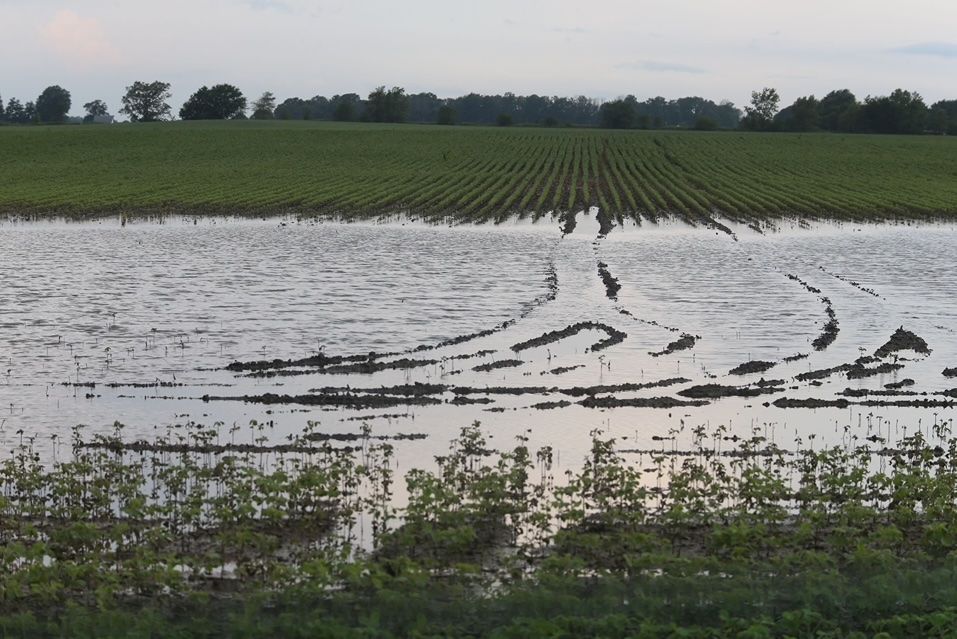Cover Crop Resources to Help You Plan This Fall

At this time of year, many soybean farmers begin to consider post-harvest management tasks including fall burndown, soil sampling, fertilizer application and cover crop planting. For those considering cover crops, the soy checkoff provides resources that get you from planting to termination.
Cover crop species selection largely depends on the desired outcomes, including:
- Reduced erosion and protection of soil from wind and rain.
- Improved organic matter and biodiversity in the soil.
- Decreased nutrient loss from leaching and runoff.
- Improved infiltration of water into the soil profile.
- Habitat for beneficial insects and fungi.
- Weed suppression.
If there is more than one reason to plant a cover crop, make a list of priorities and select a species or mix of species that addresses the primary goal. Weed suppression is one of the most highly reported reasons growers use cover crops, second only to soil health. As herbicide-resistant weeds become an increasing concern, cover crops can be an additional tool for implementing integrated pest management strategies.
The Soybean Research & Information Network, funded by the soy checkoff, provides additional resources to manage cover crops in its Cover Crops Resource Library, including a Cover Crop Selector Tool, a Do’s and Don’ts page and helpful Cover Crop Decision Tools.
Building biomass and ground cover is critical in a cover crop if weed suppression is the goal. To do that, consider the planting date, planting method and seeding rate in a cover crop management plan. All three factors contribute to the successful establishment of cover crops that can improve weed suppression.
Weather — specifically temperature and precipitation — also has significant impact on the establishment and growth of a cover crop. More controllable, and also significant to cover crop establishment, is seed quality. Test seed for germination, and screen for weed seed to avoid potential contamination.
SRIN’s Cover Crops Overview page also includes useful information on seeding methods and ground covers.
After cover crop planting, farmers can face a few challenges, with one being herbicide carryover from the cash crop. It’s important to know which cover crop species are most sensitive to carryover. Some residual herbicides applied during the cash crop planting typically interfere less with cover crop establishment than postemergent-applied herbicides, as there is more time for the active ingredients in the herbicide to degrade.
In addition, soil characteristics and weather patterns should be considered when planning cover crop management. Risk of herbicide carryover tends to grow with increasing organic matter and clay content of soils. However, research indicates that warmer temperatures and increased rainfall lead to increased rates of herbicide degradation.
Understanding herbicide characteristics for chosen cover crop species is critical to successful establishment.
SRIN offers various university resources on this topic, including a webinar from the University of Nebraska: “Influence of Soil Management Practices on Weed Control, Herbicide Fate and Crop Productivity.”
The last step in maximizing cover crop benefits is to use the right method and timing of termination to ensure maximum cash crop yields. Cover crops can be terminated before or after cash crop planting, depending on crop rotation and grower preference. It’s important to remember that competition from the cover crops can hinder the growth of the cash crops. All factors — including species, growth stage, weather and goals — should be considered when planning the termination method and timing. They require a balance between growing the cover crop long enough to maximize benefits and terminating it in time to avoid negatively affecting the following cash crop.
SRIN offers additional information on termination, including winterkill, herbicide applications and tillage, to help farmers make solid management decisions for their farms.
In addition to the resources above, there are a variety of podcasts and webinars to help farmers manage every stage of a cover crop program. Penn State University’s assistant professor of weed science, John Wallace, Ph.D., recorded a podcast to discuss the benefit of weed control with cover crops. Also, head over to the Take Action website, funded by your soy checkoff, to view webinars and read web stories to help you make more informed cover crop management decisions.



